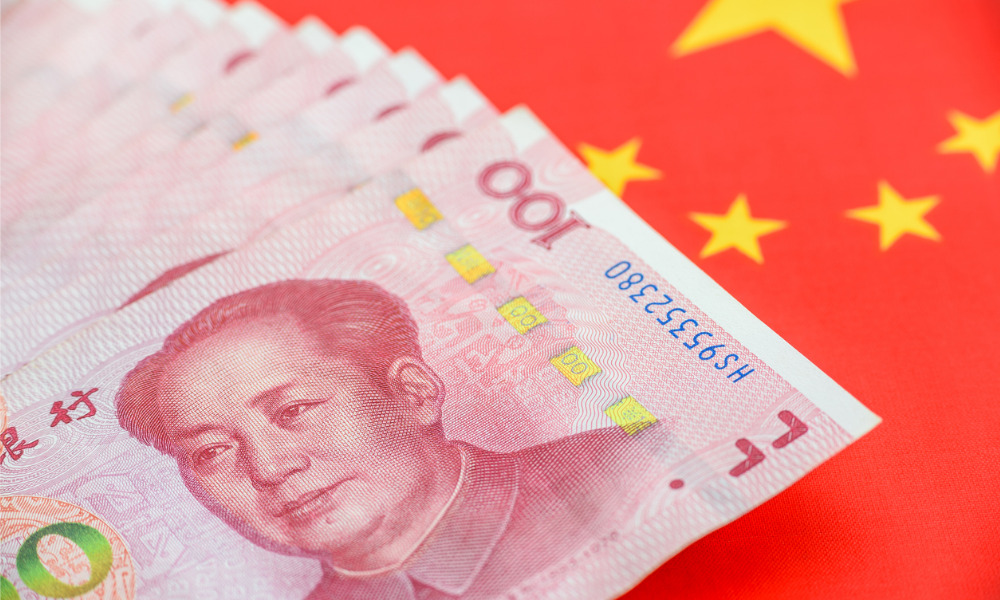Global equity PM explains why certain consumer-equity names in China can better weather policy and economic pressures

For the past few months, investors haven’t had that many reasons to have faith in Chinese equities. But investors who look judiciously at one corner of the market might find themselves rewarded, according to one portfolio manager.
“I would say we’re pretty constructive on the China staples sector. We do see attractive volume growth and pricing going forward there,” said Ramiz Chelat, CFA and senior research analyst at Vontobel Asset Management. A 23-year investment industry veteran, Chelat has been a portfolio manager for Vontobel’s Quality Growth Boutique since 2016.
In an interview with Wealth Professional, Chelat explained that his team takes a selective approach to investing in Chinese consumer staples, noting that investors should focus on companies with little opposition, a leading share of the market, good volume growth, and good pricing power.
One example he cited is Chacha Food, which manufactures and sells baked goods, nuts, and snack products. That company commands a 40% share of the seeds market, and is on its way to being number one in the nuts category; it’s reported revenue growth on the order of 20%, and more recently announced price increases ranging from 8% to 18% on its products, which would help dull any potential impact of inflation in commodity costs.
“Similarly, Budweiser APAC has made mention of putting prices up on its products, and is also getting positive mix as a result of premiumization,” Chelat said. “There’s also Shanghai M&G, which is considered an industrial stock under the MSCI classification system. They’re number one in the stationery space, and they’re clearly taking market share from the more fragmented players as they capitalize on their strong distribution advantage.”
One risk that investors watching China have been mindful of stems from China’s zero-COVID policy, which aims to tamp down future flareups of the virus. While Chelat acknowledges that lockdowns could be a concern, his team perceives any future containment measures should be more localized and manageable compared to what occurred during the pandemic’s first impact and the Delta outbreak earlier this year.
The impact on the industry, he said, is being felt more acutely on the demand side, particularly due to the chilling effect of the virus on out-of-home consumption. The consumer companies to watch, he said, are the ones who are able to shift some business into online channels.
“Yum China, the parent company of Pizza Hut and KFC, has continued to execute very well on the delivery part of their business,” he said. “Their recent results are still negative – same-store sales were -13% for KFC, for example – but we do think that delivery, which is getting close to 40% of their business, has allowed them to outperform other fast-food operators on same-store sales.”
Another developing story that’s caught some investors’ attention is the ongoing difficulties in China’s property sector, which Chelat said accounts for roughly 25% of the country’s GDP. Under the government’s “Three Red Lines” policy, the People’s Bank of China and the Ministry of Housing have set thresholds on three key financial ratios: liabilities to total assets, net debt to equity, and cash to short-term debt.
To ensure the sector’s long-term stability, the policy puts a cap on the degree to which a developer can increase its borrowings. Highly leveraged developers – which include roughly one third of the players in the sector based on the government’s tests, according to Chelat – are effectively unable to access the same credit financing they could before.
“Those developers will be constrained in their investments in new projects,” he said. “They’ll maybe be able to complete existing projects, but fixed-asset investments in property will get very weak, possibly negative.”
That could have a knock-on effect on consumption, he said, based on its impact on workers in the sector. If large companies lay off large swaths of their workforce, the question will be whether employment will shift to other sectors. Still, given the size of the Chinese economy, Chelat believes it will have a limited impact on the broad tailwind of consumption powered by middle-income households.
Another risk that consumer-staples companies are keeping their eye on, Chelat said, is the inflation in prices of inputs. Against a backdrop of supply chain disruptions, companies are grappling with a panoply of rising costs includes a wide variety of materials, ingredients, supplies, and services like packaging, seeds, cotton, and logistics.
“If you look at companies like Nike, Adidas, and to some extent, the Chinese footwear apparel retailers, they’re counting on production coming back in Southeast Asia,” he said. “Factories in Cambodia and Vietnam, where COVID-related production halts were declared, are coming back on stream, which we think will alleviate supply issues by the first quarter next year barring further outbreaks and supply chain issues.”
The tightening impact of policy in China, as well as the aforementioned weakness in the property sector, has given way to weaker consumption over the last quarter. On the whole, Chelat estimates that the issues besetting consumer companies could take a few years to shake out, and the ones with sufficient market strength and pricing power should be able to get through.
Looking more broadly at the Asia Pacific region, he said his team has a positive outlook on India and Indonesia, two countries that at certain points during the crisis saw daily COVID case counts running into the tens or even hundreds of thousands.
“We think both of those markets are now recovering as vaccination rates improve,” Chelat said. “They also had quite weak credit growth leading into COVID, but now we’re seeing credit growth pick up as liquidity is much more abundant. Both countries also showing improvements in the property cycle, which we believe is quite positive in terms of supporting a recovery both in the economy and in consumption.”



